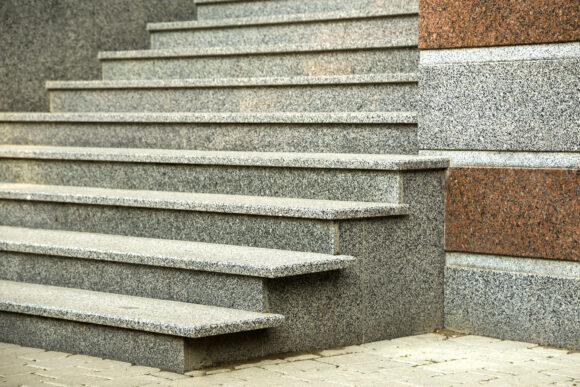A delivery driver failed to convince her employer or the Virginia Workers’ Compensation Commissioner (VWCC) that she injured her knee in a fall on the job because she had to rush to complete deliveries on a schedule.
She maintained that she “slipped and fell” while descending stairs while delivering packages, although it’s unclear if that’s what happened or what she told her employer. She also indicated that it was raining but she was inconsistent in her view on whether that was why she fell.
Her employer opposed her claim for medical and wage loss benefits, asserting that the injury did not arise out of the employment.
She appealed her employer’s denial. A VWCC deputy commissioner heard and weighed the evidence and delivered her bad news, denying her claim after determining that “all this evidence demonstrated a lack of a causal connection between her rushed pace and her injury.”
She then appealed the deputy’s denial to the full VWCC.
When all was said and done, officials had doubts about her story, which the VWCC signaled when it packaged its bad news along with a somewhat damning comment: “A witness’ credibility may, in part, be determined by his appearance and demeanor upon testifying.”
The VWCC called the evidence “speculative as to the cause of the claimant’s fall” and found no error in the deputy commissioner’s assessment of the record and the claimant’s testimony. The panel further noted that the deputy commissioner had the best opportunity to observe the appearance and demeanor of the witness and it would respect the deputy’s judgment.
The VWCC agreed with the deputy commissioner that there was a lack of a causal connection between the claimant’s rushed pace and her injury.
The evidence was murky.
It showed that when the accident occurred the claimant was not behind schedule, but instead was on track to meet her on-time delivery metrics. Similarly, there was no indication her employer prompted her to speed up her pace before the accident.
There was no evidence the claimant identified the ostensible cause of the accident when she reported it to her employer.
Medical records noted that the claimant “fell on concrete accidentally,” had a “fall three months ago,” and “had fallen down stairs while working.”
The deputy also found that there was no evidence that the stairs were wet.
In her appeal to the full VWCC, where she had the burden of proving her injury arose out of the employment, the claimant told the VWCC that she had a work-related requirement to rush, and this fast pace made her fall compensable. She argued that contrary to the deputy commissioner’s depiction, an employee can be “rushing and on time simultaneously,” and that does not negate the injury from arising out of the employment.
She acknowledged that if a deliverer was behind or moving too slowly, the employer would send another employee to help. The employer tracked drivers’ progress throughout their shifts.
She confirmed that prior to her fall, she was on track with her deliveries. She maintained that to keep up with her required delivery schedule, she moved at a fast pace, and she was working at a face pace when the accident occurred.
However, and most significantly, according to the VWCC, the evidence, as a whole, did not substantiate that the claimant truly attributed her fall to a rushing activity. When testifying, the claimant initially stated that “on the way coming down the steps, I took a tumble.”
“We are not persuaded, and we agree that the evidence fails to preponderate that a condition of rushing caused the fall,” the VWCC stated. “While the claimant’s employment may have certain risks associated with the completion of her tasks, there is insufficient evidence that the injury alleged is a consequence of that risk.”
Topics Personal Auto
Was this article valuable?
Here are more articles you may enjoy.



 Insurance Industry ‘Megadeals’ Dominate 2025, Says PwC
Insurance Industry ‘Megadeals’ Dominate 2025, Says PwC  Death at Universal’s Orlando Resort Roller Coaster Ruled Accidental
Death at Universal’s Orlando Resort Roller Coaster Ruled Accidental  Court Awards $32 Million Over Premature Baby’s Death at Yale Hospital
Court Awards $32 Million Over Premature Baby’s Death at Yale Hospital  Poorer Americans Dropped Federal Flood Insurance When Rates Rose
Poorer Americans Dropped Federal Flood Insurance When Rates Rose 

